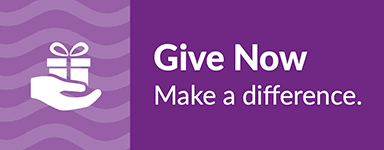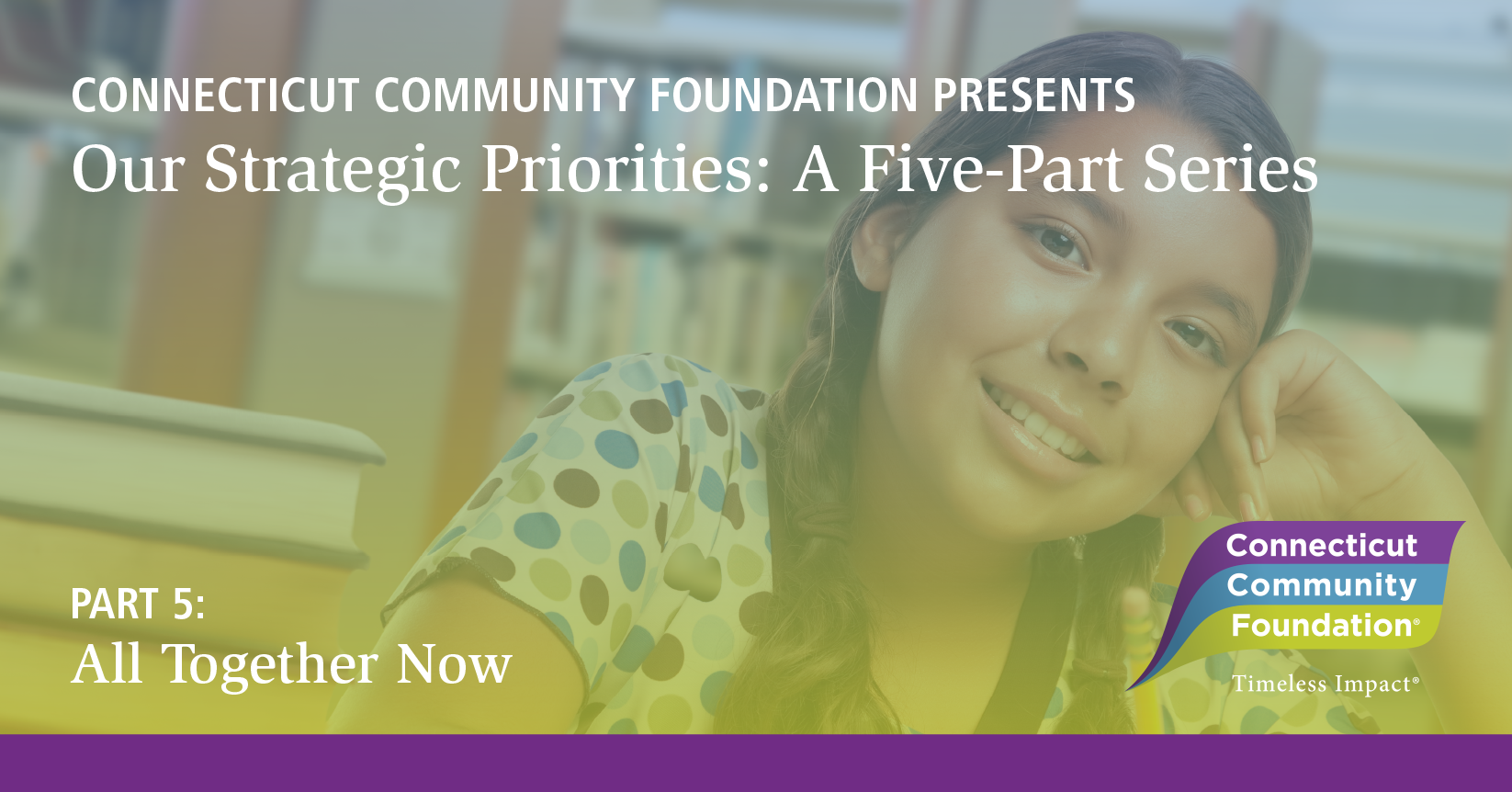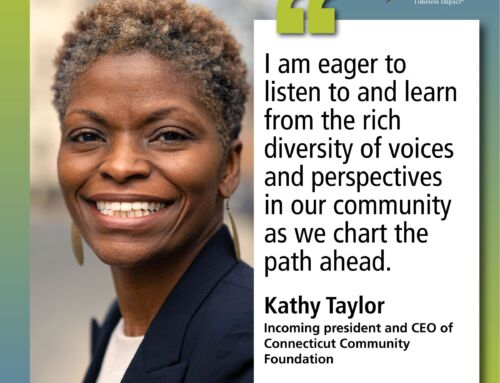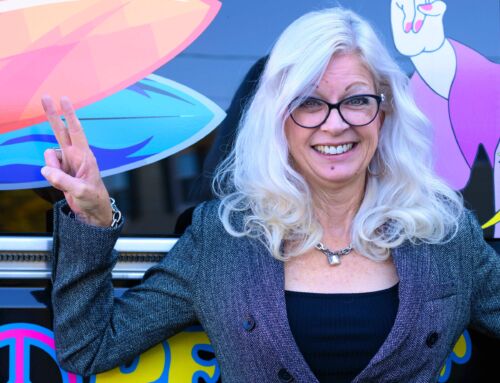As we wrap up our five-part series showcasing Connecticut Community Foundation’s strategic direction, it’s only fitting that we turn the equity lens on the Foundation itself. In 2019, to inform its strategic planning process, the Foundation compiled a community needs assessment that included local demographic, economic, and systemic trends data. The assessment provided overwhelming evidence of disparities in our 21-town service area along the lines of race, place, income, and other characteristics. It was clear not only that systemic change was necessary, but also that the Foundation didn’t sit outside the problem.
“Traditionally, philanthropy as a sector has thought it had all the answers, so it didn’t need to listen,” says president and CEO Julie Loughran. “Today, we understand the importance of listening to the people most affected by and closest to the region’s challenges so that we can partner with them in finding solutions. As we move toward creating a more just community, that means that, as an organization, we must be open to change.”
Sometimes change is thrust upon you. For program officer Patrick McKenna, COVID-19 accelerated the Foundation embracing an approach known as trust-based philanthropy. “We needed to rethink everything,” McKenna says. “When the pandemic arose, it was unreasonable to gauge an organization’s effectiveness on its ability to deliver programming it could no longer offer, and that no longer seemed relevant in the face of the new challenges COVID presented,” he says. “So we gave grantees the option of receiving unrestricted funds. We trusted that they’d know the best way to use resources to support the residents they serve.”
Meanwhile, new grantees emerged. In many cases, they hadn’t worked with the Foundation before, but it was clear that they were meeting critical, pandemic-related needs. The Foundation focused on moving resources quickly and flexibly to people and organizations meeting urgent, on-the-ground needs. “We asked them what was easiest for them,” McKenna says. “No more lengthy, complicated applications that took two months to process. Instead, we used Survey Monkey and responded within two weeks.”
Going forward, the Foundation won’t always need to move so quickly. But the pandemic shined a light on our internal policies, practices, and protocols. We’re now more aware of how inequities filter through the grantmaking process. Something as seemingly innocuous as favoring a professionally written grant application over one created by a volunteer without formal grant writing experience can create barriers. “Now we put the DEI [diversity, equity, and inclusion] lens on everything,” McKenna says. “This means we hear more voices, better understand community needs, and are a stronger and more open partner for anyone who’s out in the community making change.”
It’s no surprise that a crisis can demand adaptation, but trying times can also create opportunities for spontaneous change. That was the experience of development officer Mark Berardi, who provides support to the Foundation’s Women’s Giving Circle. Earlier this year, the six volunteers who comprise the WGC’s steering committee sat down to set the agenda. Typically, they consider a range of learning opportunities for members of the circle, who pool their charitable gifts and ultimately make yearly grants to organizations serving women and girls. This year, they immediately zeroed in on race, equity and inclusion as where they need to focus, learn, and grow.
“It just happened organically,” Berardi says, adding that their focus on diversity, equity and inclusion arose independently of the Foundation’s strategic plan, though it was certainly aligned with it. “They saw the challenge, and they were willing and ready to engage,” he says. “I was impressed by how much the group assessed their own beliefs, biases, and culture. With all 62 women in the circle, the engagement was sky high.”
Program officer Francesca Evangelista, a former social worker who joined the Foundation nine months ago, is also encouraged by the Foundation’s internal conversations among staff. Evangelista says she’s noticed how DEI conversations happen every day, not just during special training. “As a social worker, I was always putting out fires,” she says. “It’s refreshing to be in an organization that’s prioritizing giving people time to reflect. We’re all open to learning, and it’s a very safe space to have difficult conversations.”
We’re proud of stories like these, but the Foundation leadership and staff are also aware that change happens over the long term and requires understanding of the programmatic and administrative challenges nonprofits face. Josh Carey, director of grants management, has worked in philanthropy and the nonprofit world for over 20 years. Carey echoes Patrick McKenna’s call for an inclusive, accessible, clear, and streamlined approach to grantmaking. “It’s our job to do our homework upfront,” Carey says. “We need to research the issues, to seek out nonprofits that we haven’t traditionally helped, to invite them to apply. When they do, we don’t want to ask for extra documentation that we could find ourselves. These organizations are already taking on extraordinary challenges with very limited resources.”
Carey adds that even seemingly small changes, such as updating the language of the Foundation’s grant guidelines, help the organization and its community partners stay focused on work that prioritizes equity. “We used to just say that we wanted to protect the environment,” he says. “Now our guidelines say we’re applying an environmental justice lens to clean up the environment to reduce health disparities.” Carey says that adding the context of people and communities helps the Foundation prioritize systemic change. “Of course, it can be good to support the conservation work of a land trust,” he says. “But if we can support a community garden in the middle of a food desert, then, in addition to considering land use, we’re also making an impact on food access and health outcomes. Now our grant process contains those larger considerations and goals.”
The Foundation is also taking a fresh look at its work with donors. Since joining the Foundation in 2007, director of development Cynthia Merrick has worked with donors to help them align their charitable giving to their values. “You’re working with people who very much want to help others,” she says. “They want their giving to follow what’s in their hearts.” Increasingly, that means helping donors see how their gifts can have the greatest impact by supporting efforts to reduce disparities.
Merrick was encouraged by the response to the Foundation’s COVID-19 Response Fund. That fund, which launched in March 2020, was designed to meet basic needs arising from the pandemic. The fund was expressly designed to support communities hardest hit by the pandemic and where the disparities were greatest. A second fund, the COVID-19 Recovery and Resilience Fund, was launched in the fall of 2020 and looked beyond immediate needs and toward long-term recovery with an eye toward addressing inequity at the systems level. In both cases, the donor community understood the need and rose to the challenge. “We normally don’t focus on soliciting for specific, immediate initiatives like this,” Merrick says. “But we received contributions from our regular donors and from hundreds of people who were new to us.”
Going forward, the Foundation will continue to advocate for changing inequitable systems. But, as president and CEO Julie Loughran notes, the Foundation understands it doesn’t have all the answers. “We know that we are dealing with problems that are hundreds of years in the making,” she says. “We know we’re not going to eliminate systemic racism on our own. We also know that as we aspire to a more inclusive and trust-based approach, we’re going to make mistakes along the way. But fear of faltering won’t stop us from pursuing our vision of an equitable, inclusive, just, and vibrant community.”
Connecticut Community Foundation was founded as the Waterbury Foundation in 1923 by seven local leaders. Their stated goal was “to improve the social and living conditions within Waterbury and vicinity” and to do so by supporting organizations doing “more or less new and experimental work.” As we approach our 100th anniversary in 2023 and reflect on a century of work that community-focused donors and nonprofits have made possible, we find ourselves caught up in the spirit of the Foundation’s first words. We hope you will join us in exploring new ways to create an equitable and inclusive community where all residents have what they need to thrive. Let’s build tomorrow together!








